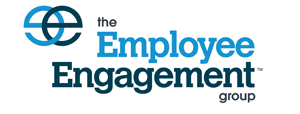
How Online Training Can Resolve the Construction Labor Shortage
Construction is already behind the technological curve, and many skilled hands are retiring rather than keeping pace. Online training can fill the void.
Like many other industries, Construction is facing a shortage of skilled labor. Unlike other industries, their skills gap is partially of their own making. Whereas Manufacturing has responded to a loss of qualified workers by adopting new labor-saving technologies, Construction has been slower to modernize—and as a result, the skills gap is hitting their firms hard.
According to a recent report from Associated Builders and Contractors, the industry is currently over a half million workers short of the laborers needed to meet current demand. And, with a quarter of the current workforce reaching retirement age in the next decade, the labor shortage is expected to grow worse. Moreover, the labor shortage isn’t confined to skilled trades, but also affects the management level, with superintendents, engineers, and CAD managers also in short supply.
Technology offers an opportunity to tighten the skills gap, but with new technology comes new training needs. Here’s how construction firms can combine technology and training to bridge the skills gap.
New technologies can mitigate the worst pain points of the construction labor shortage.
Technology has taken a long time to reach a point where it could be useful on a job site. Every construction site is unique, and weather and climate conditions introduce environmental variables that require experience and a trained eye to handle correctly. Many of these skills are irreplaceable. Where technology can truly aid workers—and ease the labor shortage—is by improving design communication, reducing paperwork, streamlining project management, and placing new tools in the hands of workers who then become skilled operators.
- Improved communication.
Construction jobs involve a complex network of clients, firms, contractors, and regulatory bodies. Projects frequently suffer delays due to missed communications or scheduling challenges. Improved project management software can help keep these parties on the same page, reducing delays in the process.
- Enhanced document management.
Construction plans go through numerous revisions as the initial vision of the architect meets the demands of the client, the finalized blueprints come to terms with the physical reality of the construction site, and the finished work itself comes under scrutiny of the site inspector. Along the way, missed documentation or incorrect paperwork can land a project in a lot of red tape. Modern CAD software that aids in version control, file sharing, and documentation access can reduce these issues.
- Streamlined inspections and approvals.
Construction projects need to pass numerous rounds of inspection to ensure that the project has been built according to plan and that it meets local building codes. Many construction firms also have their own quality standards to meet, and want ways to ensure their processes are being followed. Technology that allows laborers to document their work onsite can help these inspections run more smoothly.
- Reduced rework.
Failures in communication, missing documentation, or work that is not up to code can all cost construction firms thousands—if not millions—of dollars in rework. Technology that helps project managers and construction workers stay in touch about processes and approvals can catch errors before they occur, saving the company costs of time, labor, and a damaged reputation.
- Advanced construction tools.
Enhanced equipment is also making its way onto construction sites, connected to the Internet and equipped with precise sensors, scanners, LIDAR, and GPS. As these tools improve, so will their abilities to save labor and improve workplace safety. But when they do, they will also require a new class of skilled operators to use them.
Modernizing the construction industry can attract younger workers.
A secondary benefit to introducing new technologies into the construction industry is that it can help change the reputation of construction jobs from difficult, dirty, dangerous labor into jobs that are more appealing to incoming generations of the workforce. Many members of Gen Z are wary of jobs that are at risk of automation and find the prospect of hands-on work that puts their problem-solving skills into practice appealing.
At the same time, these workers are already well-versed in using digital interfaces and are more likely to welcome an opportunity to put those skillsets to use. This is especially true of technologies that can improve workforce safety, and training programs that offer a reliable path toward middle management. Among these programs, training in CAD software is especially important, as many Gen Z workers are entering the industry without sufficient knowledge of these design tools.
Construction’s labor shortage has a middle management problem.
A common misconception in the Construction industry is that the labor shortage exists only among hourly craft positions, such as carpenters, electricians, or bricklayers. However, in a 2023 survey by the AGC Construction Association and Autodesk Construction Cloud, 86% of firms with open positions reported difficulty filling those positions—and this was true for both salaried and hourly craft openings.
In fact, of firms with open jobs, 82% listed “superintendent” as being one of their most challenging positions to fill—more than bricklayers or carpenters (81%), electricians (78%), surveyors (67%), or roofers (62%). Other salaried positions with high vacancies included project managers or supervisors (79%), engineers and estimating personnel (70%), lean construction professionals (68%), and BIM personnel (62%). Filling these positions requires a healthy pipeline of incoming talent, as well as ongoing training to bring promising workers up to speed.
Applied Learning: New construction technologies require new training solutions.
All these workers—the skilled operators, the incoming generation, and the middle management—will need training materials to help them keep pace with both current technology and future advances. For the Construction industry, where so much training happens on the job site, having training support readily at hand is essential.
This is where mobile, online training shows its strength. Already, many sites are taking advantage of the lowered costs of mobile tablets to access and share BIM drawings even from the job site. Having direct access to these training materials lets workers put it to use new information to use immediately.
Eagle Point delivers an LMS with online training for the construction industry—anywhere, any time.
Adopting new technologies or creating new training programs is a significant investment for any firm, but the right learning partner can make this step more attainable. At Eagle Point, our Pinnacle Series LMS platform comes fully equipped with a library of industry content, including AutoCAD, Procore, and Civil 3D, so that learners can get started right away. Our customer satisfaction team works with our clients to ensure successful onboarding, while our content team continuously develops new courses and keeps current training materials up to date.
Pinnacle Series includes:
- Accessible training from the job site. Our cloud-based training platform is available anywhere with an internet connection, providing mobile training support right where you need it.
- Workflows to improve compliance. Our customizable workflows can guide team members through specific process steps, reducing errors and improving compliance with company standards.
- Content libraries of industry-specific training programs. Pinnacle Series comes with access to training content across leading industry software, as well as courses in leadership, project management, and popular office programs.
- Course creation features for custom content. Our LMS equips users with the tools to create their own training materials, or edit our content library to include steps specific to their own firm’s operational standards.
- Skill assessments to identify knowledge gaps. Our assessment tool helps you identify training needs for your team so that your workers can jump straight into new material. It can also help you understand the relative skill strengths of new hires, and help with assigning workers to projects where their skills will be the right fit for the job.
Eagle Point offers all these solutions and more. If you would like to experience our software firsthand to assess whether it will be a good fit for your construction team, contact us today. We would be happy to take you through a demo of our capabilities.
Contact Eagle Point Software to learn more.




